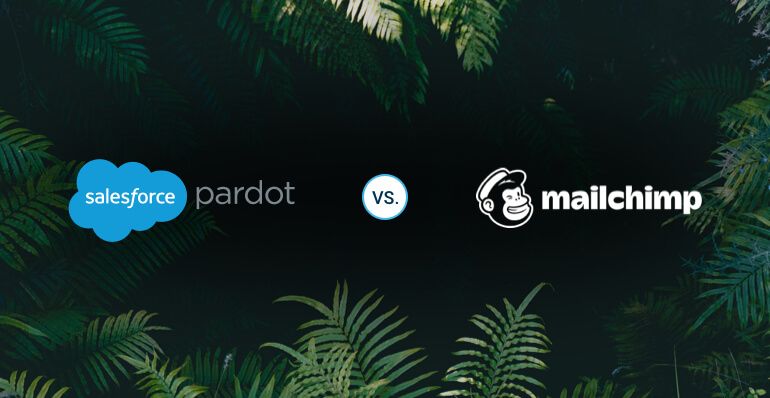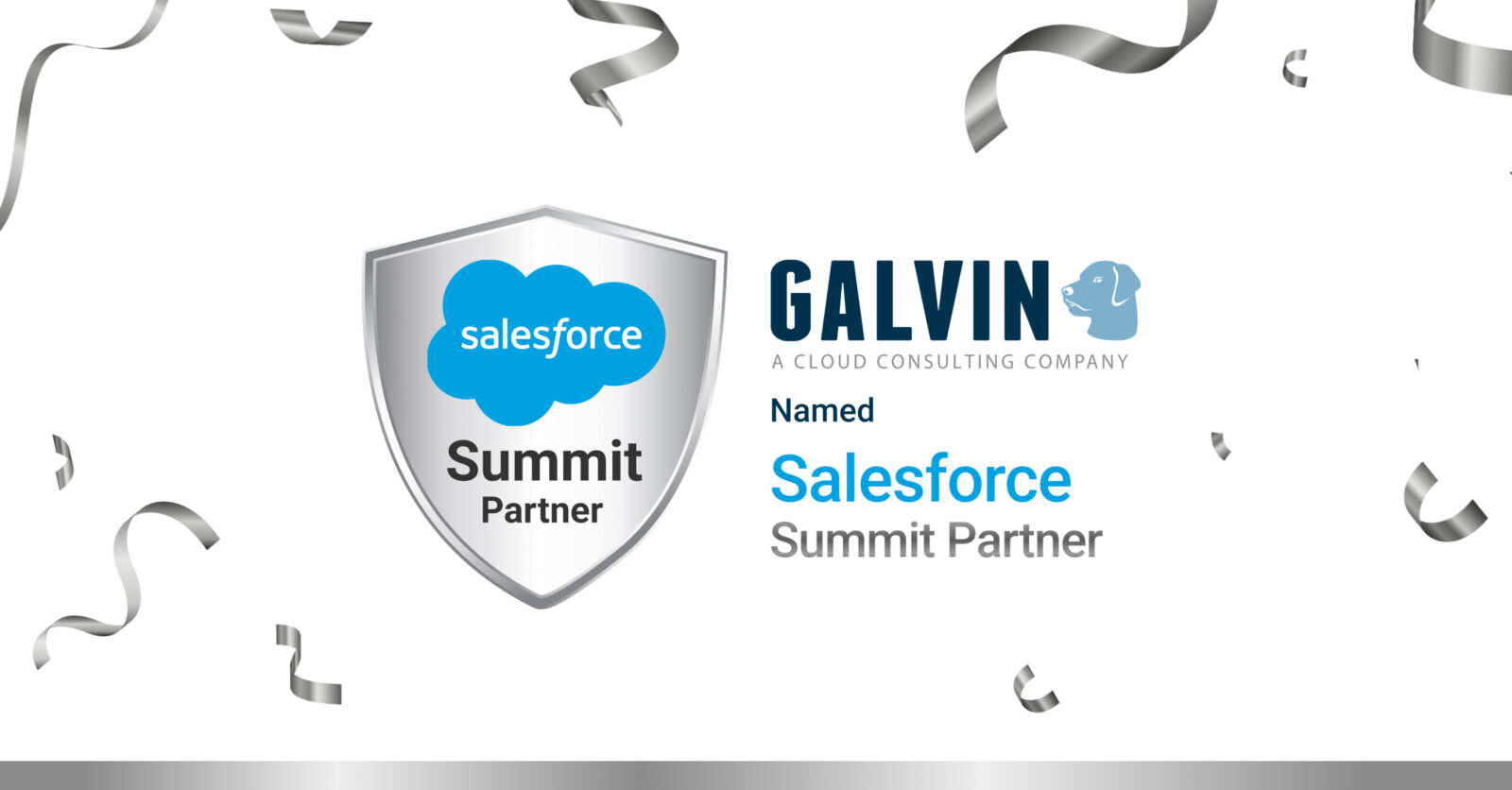Mailchimp vs. Pardot: Which Marketing Platform Rules the Jungle?

As of 2020, more than 8,000 marketing technology solutions existed. That many choices makes finding the right fit daunting. Yet two platforms often emerge as frontrunners when it comes to marketing automation: Mailchimp vs. Pardot. Each excels in different ways, so which one is better?
The answer lies in your marketing strategy.
#1 Ideal Customer

While Pardot serves both B2B, B2C, and nonprofit customers, the platform lends itself to mid-sized and larger enterprises. Marketing teams heavily engaged in lead generation and longer opportunity cycles tend to favor Pardot.
Mailchimp also delivers for the same customer mix but caters more to small businesses and organizations. The platform’s e-commerce plugins also favor smaller online retailers.
#2 Salesforce Integration

This may seem like a no-brainer with Pardot owned by Salesforce but there is more to unpack here. Mailchimp integrates with Salesforce as well. However, the functionality differs significantly.
Pardot’s native integration means data is always current. That facilitates real-time communication with customers based on their interactions. The integration also allows the data to trigger tasks, notifications, or campaigns based on tracked actions. For example, a person may click on an email link to download a report. In real-time, the system can notify a salesperson and create a task to follow up in 24 hours inside Salesforce.
While Mailchimp can communicate with Salesforce, the platform is not fully integrated. Data updates are not real time, meaning marketers cannot target a prospect based on an engagement immediately. Mailchimp also cannot create tasks or assignments inside Salesforce.
Pardot also rules supreme when it comes to how data syncs. Pardot uses criteria set by the business to determine what happens next based on a person’s actions. The system is capable of being smart enough to know when to continue nurturing a customer and when a prospect qualifies for a different business process, like sales. Pardot’s granularity also enables it to pass over defined pieces of data valuable to the next business process. In comparison, Mailchimp is all or nothing and lacks the same flexibility. In this case of Mailchimp vs. Pardot, Pardot is the front-runner.
#3 Segmentation

If customer segmentation is key to your business, Pardot is better. The major difference comes in how the platforms look at individual customers. Mailchimp places subscribers inside an audience with similar characteristics. The platform limits segment criteria to five conditions. Prospects can exist on infinite lists with no segment criteria limits in Pardot.
Mailchimp also takes the segment criteria at face value. Segmentation qualification occurs based on data like purchase activity, age, or location. Pardot offers additional qualification options like behavioral scoring and demographic grading based on an individual’s engagement and fit to refine the segment allowing campaigns to become highly targeted. In this case of Mailchimp vs. Pardot, Pardot is the front-runner.
#4 Email Builder

Mailchimp is known for its easy email builder making it a marketer favorite. The platform’s no-code option offers drag-and-drop content blocks, graphics, videos, and buttons. Customizable templates make for easy build-and-send emails. There is no debate that Mailchimp makes sending effective, attractive emails simple.
Pardot does not carry the same reputation, although its newest email builder release puts it on par with its competitor. Pardot’s low-code option still allows marketers to jump into the source code for ultimate styling. However, depending on a company’s needs, that may be a plus. Pardot’s email builder offers more flexibility for customization allowing marketers to achieve a brand’s exact look and feel.
Both platforms support personalization. However, Pardot offers a handy feature not available in Mailchimp called Advanced Dynamic Content. This takes personalization beyond merge tags. Advanced Dynamic Content allows marketers to embed content blocks in forms, websites, landing pages, and emails to change the content based on each individual prospect’s segment.
For companies looking for email marketing impact with ease, Mailchimp works great. Those wanting ultimate customization will love Pardot.
#5 Campaign Automation

Mailchimp makes building automated campaigns quick and easy. Emails become part of a sequence and are triggered based on different prospect data or interactions. Each email is defined by a trigger, schedule, segment or tags, and a post-send action. For example, a potential customer may subscribe to a blog about kitchen cleaning. The email campaign may immediately send them a welcome email. Day two is the latest blog article. Day five sends an email regarding free product samples. The sequence progresses based on how it is built.
Pardot outsmarts Mailchimp on this front. Its sophisticated engagement tracking allows marketers to pull together actions, triggers, and rules across campaigns into one view. The system logic can react to prospects differently based on interactions with the content. The system also tracks those interactions across channels rather than just through email.
Let’s say Pardot has a three-email campaign. The logic says don’t send email two if the prospect does not open email one. But Pardot sees that while the recipient did not click the email, they did visit the website after receiving it. Therefore, they remain in the campaign and receive the next email in the sequence. Mailchimp processes its sequences more linearly and lacks the same filter sophistication.
#6 Reporting

Mailchimp comes with several out-of-the-box reports. The canned information offers an easy way for marketers to track activity like email engagement over time and every 24 hours, advertising reports, and landing page clicks. Customized system reports are not available.
Pardot wins for its configurability. The platform offers the same standard reports as Mailchimp plus fully customizable dashboards and reporting integrating more robust engagement data and marketing asset impact.
Mailchimp reports on how a campaign is performing: are people clicking, responding, etc.? Pardot’s Salesforce integration takes that information and applies it to business results: are people buying, renewing, inquiring, etc.? Pardot’s reporting allows companies to take a more soup-to-nuts approach in applying marketing activities to business outcomes to assess overall performance.
#7 Cost

For companies focused primarily on a low-cost option, Mailchimp works well. The free subscription lets businesses send and track attractive automated emails. Features increase with each paid subscription level. The platform is sound for businesses primarily focused on email marketing with small distribution lists and shorter sales cycles.
Pardot is significantly more expensive, but you get what you pay for. Pardot is better for businesses using an omni-channel content strategy. The automation is more strategic. The system’s sophistication and smarts make it like an additional member of the marketing team. The platform does take longer to get up and running and a higher degree of skill to operate. The ROI comes from more advanced engagement tracking, customization, and reporting to drive business results.
Mailchimp vs. Pardot: The Bottom Line
The decision of Mailchimp vs. Pardot is nuanced. Both systems offer pros and cons. Selecting the right platform depends on your business goals. Mailchimp offers simplicity. Pardot offers sophistication. Pardot’s native integration with Salesforce delivers tremendous value in making data actionable in real time. That may be ideal for more mature organizations looking to take //their marketing strategy to the next level to outperform the competition.
WANT TO TALK WITH OUR CONSULTING TEAM?
We’d love to work with you on your marketing automation needs. Our team of certified Pardot Consultants and certified Sales Cloud Consultants can work closely with your team to close more deals. Call us at 317-297-2910 or complete the form below.







